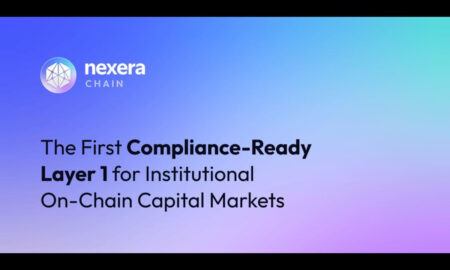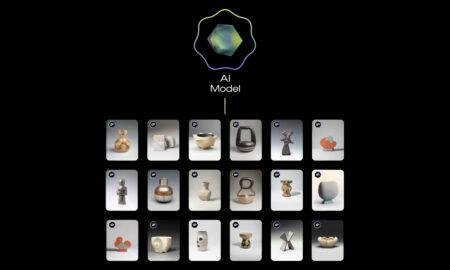An outreach organizer for privacy-oriented cryptocurrency Monero (XMR) has published a SWOT (Strengths, Weaknesses, Opportunities, Threats) analysis for the digital asset project.
Monero project’s SWOT analysis is currently a draft that the crypto’s community is planning to finalize after receiving feedback regarding the initial post that analyzes the privacy coin’s present challenges and its overall progress as a currency that promotes financial privacy.
Strengths And Weaknesses Of Monero’s XMR
Created in April 2014, the open-source Monero cryptocurrency is based on the CryptoNote protocol, which was developed to address the “weaknesses” in the Bitcoin protocol. According to Monero’s outreach organizer, the privacy-focused cryptocurrency’s strengths include:
- “Strong development”: the Monero project reportedly has the “third highest code contributor count” as there are more than 547 developers working to improve the crypto’s protocol. Only Bitcoin (BTC) and Ethereum (ETH) have more developers working to make improvements to their respective protocols.
- “Privacy”: the addresses of the sender and receiver of XMR are “obfuscated” using various cryptographic techniques. The amount sent in XMR transactions is also obfuscated. The developers of Monero aim to balance privacy with usability in order to provide the best user experience.
- “Highly researched”: Monero Research Lab and other entities helping to improve the XMR cryptocurrency conduct thorough research and “send new developments through formal third party auditing” before adding proposed changes to Monero’s codebase.
- “Active community”: Over 200 developers contributing to Monero’s codebase, 23 active Monero repositories, 340 repositories “on the Monero topic.”
- “Fixed supply schedule of 0.3 XMR per minute, so a rise in demand could see appreciation” in the crypto’s long-term value.
- “ASIC resistant”: high-end, expensive hardware users and those using less expensive GPUs to mine XMR should have an equal chance at validating blocks on the crypto’s proof-of-work (PoW) network.
- “Great communication”: Monero’s community stays active on all major social media platforms and full logs of developer meetings can be accessed here.
- “Usability”: Desktop GUI wallets for Monero are available across major operating systems and leading provider of hardware wallets, Ledger has also added support for XMR.
- “Scalable”, “Decentralized and Global”, “Business-oriented”, “public” (lead maintainer of Monero is available for discussions and other members of the crypto’s community are also willing to answer questions and help people gain a better understanding of the project).
- “Accessible and acceptable” by a relatively large number of merchants throughout the world.
- “Future oriented”: different entities contributing to the Monero project are working on various protocols that would allow users to maintain their privacy when using the internet.
Some of Monero project’s weaknesses (according to information compiled by its community outreach manager) are as follows:
- “Liquidity”: The “relative complexity” (compared to Bitcoin and other cryptos) of Monero’s codebase makes it more difficult to add support for XMR on exchanges and wallets. This is why XMR’s liquidity may not be as high as other major cryptocurrencies.
- “Hard forks”: Although forkable networks may help improve a cryptocurrency’s efficiency and introduce important changes required for the scalability of a project, forks can also introduce many “scam coins.”
- “Scalability”: While Monero’s “dynamic block size” may allow XMR’s network to scale more effectively, the sophisticated privacy features implemented in the coin’s protocol could make it more challenging to scale in the long-term.
- “Governance”: Monero project is “not completely decentralized,” however its community members have been working cooperatively and “so far they have not abused their powers.”
- Concerns expressed among community members regarding Monero project’s “relative centralization.”
- Most community discussions take place on Github, Reddit, and IRC – which means Monero is not sufficiently decentralized according to some members.
- Monero project and its related products and services are too technical for many merchants and users – which could prevent mainstream adoption.
- Relatively large size of Monero’s blockchain data can make it challenging to show “user balances and transact with wallets.”
- “Funding model” is mostly donation based which can potentially adversely affect the Monero project’s long-term development.
- “Code especially APIs” are too complex at the moment and need to be “cleaner” to promote adoption and usability.
- “Transaction size”: Additional privacy layers of Monero result in larger transaction size when compared to other cryptocurrencies. Bulletproofs helped address this issue, however more needs to be done to ensure scalability.
Opportunities And Threats For Monero (XMR) Project
Current opportunities for the Monero project, compiled by the cryptocurrency’s outreach manager, include:
- Market capitalization of Monero’s XMR tokens is expected to remain among the highest out of all major digital assets.
- Monero could potentially serve as a “Bitcoin hedge” should their be technical or other adoption and usage-related issues with the world’s most dominant cryptocurrency.
- “Economic empowerment and human rights”: Monero project aims to remain accessible to everyone, thus promoting greater financial inclusion.
- Monero offers financial privacy to high-net-worth individuals (HNWIs) who hold wealth and want to remain anonymous and/or not disclose how much money they might have.
- Monero project has the potential to attract more developers as it presently has the third-most developers out of all active crypto projects (with Ethereum being first and Bitcoin in second place).
- “Open-source community” allows for more effective collaboration and more efficient ongoing development of Monero.
- Several prominent artists and professionals from various different industries have reportedly started using Monero’s XMR.
Threats to Monero’s future adoption and development are as follows (according to community outreach manager’s list):
- Lack of regulatory clarity and threat from regulators who want to ban private crypto transactions could prevent the growth and adoption of Monero and other privacy-focused cryptos.
- It’s possible Monero could lose a significant portion of its market share to several other privacy-oriented cryptocurrencies such as zcash (ZEC).
- “Network Attacks”: “A variety of attacks on the Monero network are theoretically possible and have been explored in depth by the Breaking Monero series.”
- Disseminating misinformation and censoring important information could discourage potential new users from using XMR and other privacy coins.









